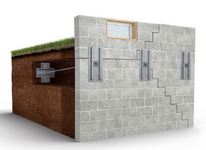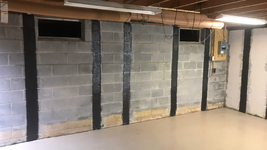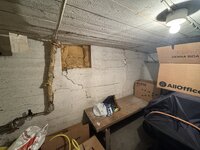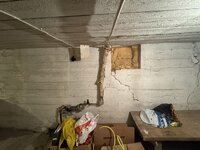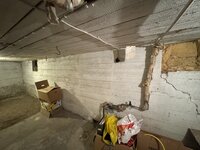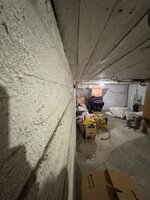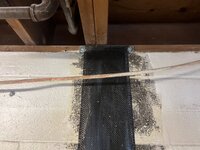Hi everyone,
I have a basement wall that is bowing, and I’m exploring different methods to reinforce it. I've attached pictures of the wall in question for reference.
The wall is about 10m wide and 2m tall.
YouTube Video: Basement Wall Reinforcement
Since the basement is only used for storage, losing a small amount of space is not an issue.
However, this seems like a costly alternative.
I’d appreciate any advice or insights regarding:
I have a basement wall that is bowing, and I’m exploring different methods to reinforce it. I've attached pictures of the wall in question for reference.
The wall is about 10m wide and 2m tall.
Current Considerations:
I’m leaning towards using carbon fiber strips as they seem to be the most cost-effective option. Here's a video summarizing various reinforcement methods, including carbon fiber strips:YouTube Video: Basement Wall Reinforcement
Alternative Idea:
Would it be feasible to cast a new concrete wall, approximately 100-150 mm thick, with centrally placed rebar? My thought is to connect this new wall to the existing foundation and floor joists, potentially using shear studs to tie it into the existing wall.Since the basement is only used for storage, losing a small amount of space is not an issue.
Wall Realignment Option:
If I want to straighten the wall before reinforcement, I assume I would need a ground anchor system.However, this seems like a costly alternative.
I’d appreciate any advice or insights regarding:
- The effectiveness of carbon fiber strips for my situation.
- The feasibility and structural integrity of adding a 100 mm thick concrete wall as reinforcement.
- Whether straightening the wall first is necessary, and if so, recommendations for cost-effective solutions.

